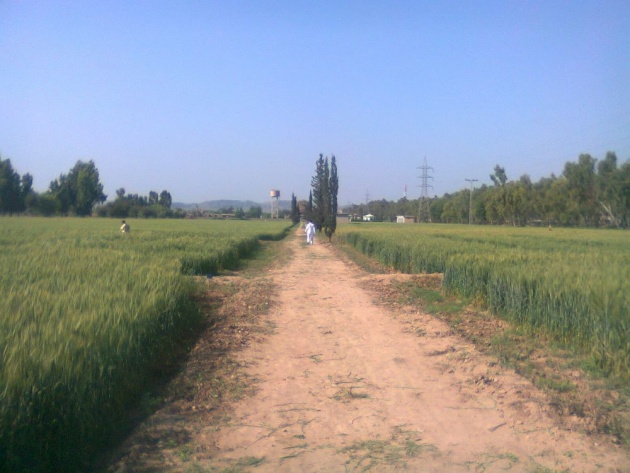In Khyber Pakhtunkhwa, total land is 10.2 million hectares (m.ha), nearly 19 %( 1.93m.ha) is cultivated, while 60% of the cultivated area is rainfed. Major portion of these lands are in the southern parts of the province, comprising of Kohat, Karak, Bannu and D.I.Khan Districts (Khan 1986).
Kohat is a town in central Khyber Pakhtunkhwa Province in Pakistan. The total area of Kohat district is 2545 Square Kilo Meter. There are 275 persons residing in a square K.M. Total cultivable land is 27430 hectares. The main source of income is Agriculture. There are four dams in Kohat i.e. Tanda Dam, kandar dam, chanda Fateh Khan and Gandiali Dam. Sixty to 70% area is rainfed and is totally dependant on rainfall. Rainfall in Kohat is erratic in nature and precipitation varies widely from 125 to 500 mm per annum. Monsoon precipitation dominates in some areas, while in other parts a winter rainfall pattern prevails. Sixty to seventy percent of monsoon rains are received during summer (July to September), while the remaining rains are received during winter (December to February). Average temperature varies considerably. Highest temperature frequently exceeds 48 degree Celsius. In winter months minimum temperature sometimes falls below the freezing point. Cold winds in winter season increase evapo-transpiration, which further aggravate the crop situation.
At Barani Agriculture Research Station (BARS) Kohat applied research work is carried out which include (i) Introduction and acclimatization of varieties of crops grown under rain fed condition (ii) The selection of suitable varieties for release to farmers and the development of suitable technology packages for these varieties, (iii) The selection/introduction of suitable varieties of fruit crops and vegetables in partial; irrigated areas and (iv) the integration between cropping and livestock husbandry under Barani conditions. Crop technology packages developed on research stations are tested under a wide range of agro-ecological conditions prevailing in Kohat division. Subsequently, final recommendations are formulated for the farming communities of the area on this research basis.




